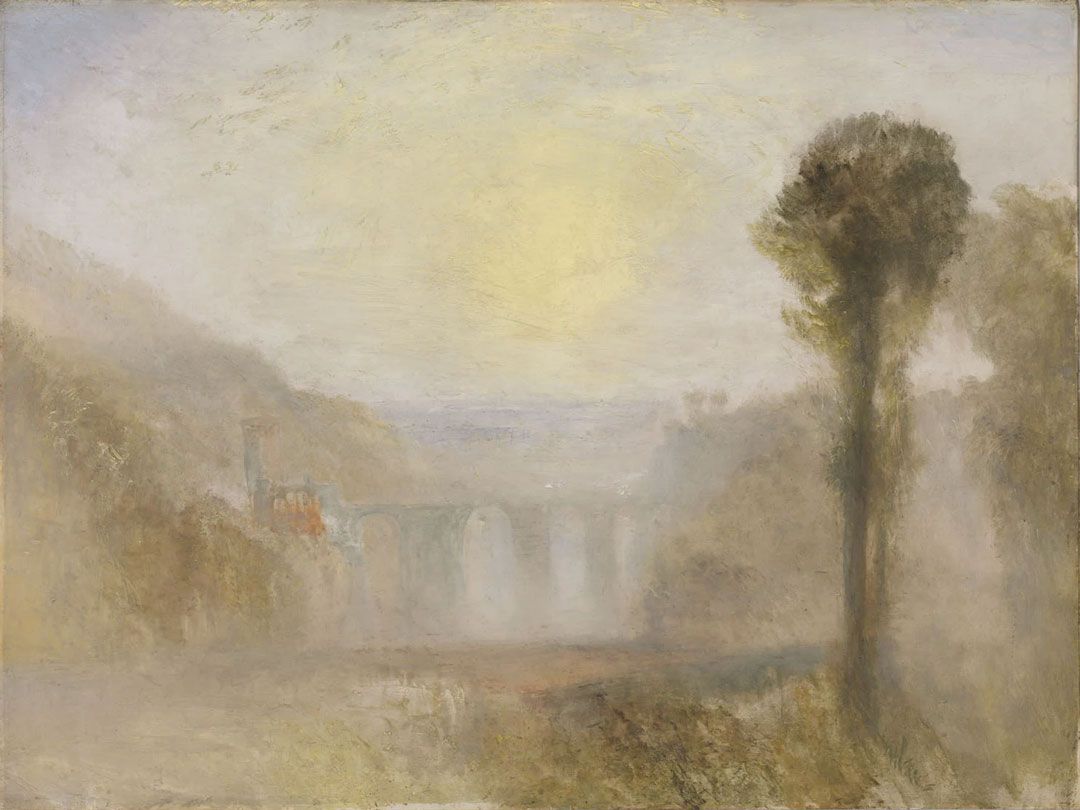
Turner at the MNAC · light, nature and ambition
From 20 May to 11 September 2022, the Museu Nacional d'Art de Catalunya presents "Turner. Light is Colour", an exhibition that explores J.M.W. Turner's interest in meteorological and atmospheric phenomena.
Source: Museu Nacional d'Art de Catalunya (MNAC) · Image: Joseph Mallord William Turner, "El Ponte delle Torri, Spoleto" (c.1840-5). London, Tate.
"Turner, according to Ruskin, was able to depict in his paintings the variety of nature in space: by means of a painting characterised by 'total subordination to light and shade', he has represented in a landscape hundreds of planes, where, in his opinion, 'the old masters expressed only one'. The statement is evidently excessive, but there is some truth in the fact that it was particularly important for Turner to depict the depth of space in painting. This implied a greater attention to the infinite varieties of light present in nature and the choice of subjects that provided the occasion to depict them".Silvia Ginzburg, “Turner” (1990)
For J.M.W. Turner (1775-1851), direct contemplation of objects and atmospheric phenomena had a pivotal importance in the genesis of his late style. But -as Ruskin pointed- the result of this direct contemplation was not an exact, precise representation of the observed thing, but a subjective impression that those objects or phenomena caused in the painter’s mind. In this sense, it is not surprising that Turner's paintings were so deeply admired by Impressionist painters such as Claude Monet and Alfred Sisley several decades later, and that his paintings (especially those created during the last decade of his life) are usually regarded as a direct antecedent of 20th-century abstraction.
Organised in collaboration with the Tate, the exhibition at the Museu Nacional d'Art de Catalunya " traces the development of Turner’s compositions, from the first sketches to the watercolours, oils or final prints. The exhibition reveals how watercolour was fundamental in the artist's scientific but intuitive approach, which allowed him to grasp the intensity of the forces of nature with an expressive precision never equalled."
In the interesting exhibition dossier, the Museum notes that "Turner elevated the status of landscape painting, which until then had been considered a minor genre, to 'major art' by challenging conventions and incorporating innovative techniques in his allegorical depictions of spectacular landscapes and weather conditions. Today, Turner is widely recognised as the greatest landscape painter of the Romantic period due to his mastery of light, colour and atmosphere, and his ability to situate human experience in the larger natural world.”
Read the full article

